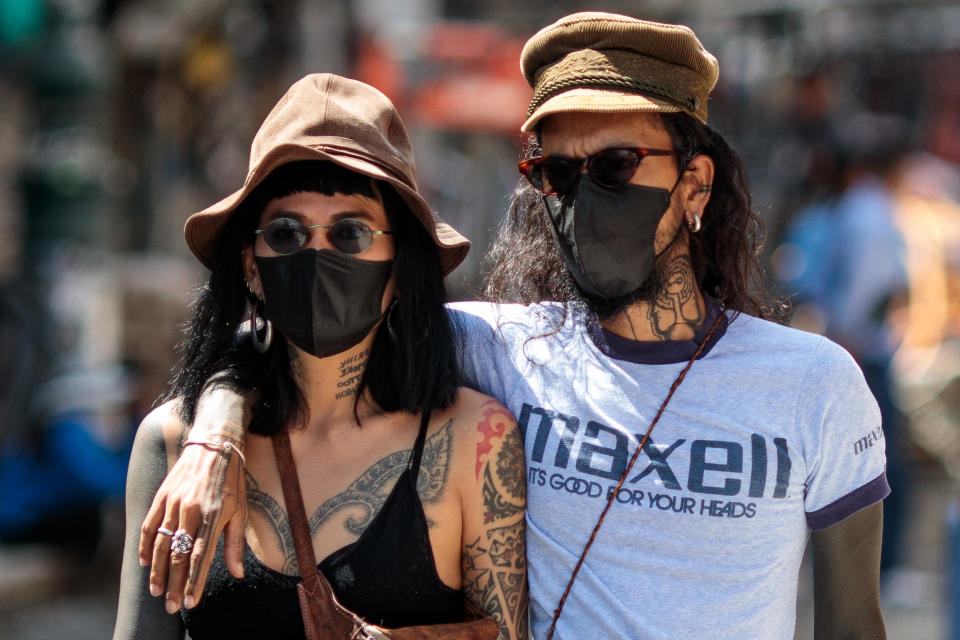Should we be concerned by the ‘second strain of coronavirus’?

Fears have been raised the coronavirus Covid-19 may have mutated into a second deadlier strain.
Scientists from Peking University in Beijing looked at the DNA of 103 patient samples.
They concluded the virus appears to have evolved into “two major types”, defined by two genetic mutations, both of which are circulating.
Read more: Dog tests 'weak positive' for coronavirus - but experts 'doubt it could spread to humans'
Known as types L and S, type L made up around 70% of the cases the team sampled, which they described as the more “aggressive” of the two.
The results have sparked widespread criticism, with some experts calling 103 samples insufficient, while others claim small genetic mutations will unlikely impact the virus’ severity.
Some have even called for the paper to be retracted, citing the “spreading [of] dangerous misinformation”.

Covid-19 emerged at a seafood and live animal market in the Chinese city Wuhan at the end of last year.
In less than three months, the infection has reached every inhabited continent, with confirmed cases in more than 90 countries.
Of the over 98,700 reported patients, more than 80,500 are in mainland China, according to John Hopkins University data.
Globally, the death toll exceeded 3,300 on Friday.
The UK has 116 confirmed cases.
A 70-year-old woman with underlying health issues became the first Briton to die in the UK on Thursday, the day after she tested positive for Covid-19.
On 28 February, a British man died after becoming infected on the quarantined “hotbed” Diamond Princess cruise ship.
While it may sound alarming, four out of five cases are thought to be mild and more than 55,490 patients are confirmed to have “recovered”.
Twenty-two countries also have just one reported case.
What did the Peking University scientists find?
Covid-19 is one of seven strains of the coronavirus class that are known to infect humans.
Others range from the common cold to severe acute respiratory syndrome (Sars), which killed 774 people during its 2002/3 outbreak.
To better understand how Covid-19’s genetics relate to other coronaviruses, the Peking scientists screened a small sample of patients, of whom 60 were from China.
They concluded the virus appears to have evolved into “types L and S”.
Read more: England's top doctor expects the coronavirus to ‘peak’ in ‘two-to-three months’
Type L is said to have made up around 70% of the samples, despite S being the “ancestral version”.
Type L was reportedly more prevalent when the infection emerged in Wuhan, but decreased early in the year once the virus started crossing into other countries.
The scientists also described type L as “more aggressive” and potentially faster spreading.
Type S meanwhile is said to be more similar to coronaviruses found in bats – where Covid-19 likely started, and pangolins – a potential “intermediate host” before the strain “jumped” into humans.
The scientists suggest type S may have been circulating unnoticed for some time, not causing severe illness.
They stress, however, their research is preliminary and based on a small number of samples.
Should we worry about the ‘second coronavirus Covid-19 strain’?
Covid-19 is an RNA virus, which evolve almost constantly.
In simple terms, RNA is a precursor to the more well-known DNA.
Ian Jones, from the University of Reading, told the New Scientist around six genetic mutations arise every time Covid-19 replicates in a patient’s respiratory tract.
The two genetic mutations that apparently distinguish types L and S have largely been dismissed, with experts arguing such small alternations would unlikely impact the virus.
The World Health Organization (WHO) reported “there is no evidence the virus has been changing”.
“It’s got a slightly different signature, but it’s not a fundamentally different virus,” said Dr Mike Ryan executive director of the WHO’s health emergencies programme.
Writing on Twitter, Professor Andrew Rambaut from the University of Edinburgh said these genetic variations are “entirely expected”.
He added it is a “flawed inference” to suggest the mutations could make the virus behave differently.
On the discussion forum Virological, scientists from the University of Glasgow claimed the results were “reached by misunderstanding and over-interpretation of data”.
They added it is “not intriguing” when two “types” of a virus “differ by two mutations”.
The scientists also disputed the claim type L spreads “more readily” just because it was more common in the patients the Peking team sampled.
“It is incorrect (and irresponsible) to state there is any difference in transmission rates”, they wrote.
“Given these flaws, we believe [the Peking scientists] should retract their paper, as the claims made in it are clearly unfounded and risk spreading dangerous misinformation at a crucial time in the outbreak”.
Read more: Coronavirus death rate higher than previously thought, officials say
Others have been less damning, but stress further research is required.
“The authors reasonably construct some tentative hypotheses, which can now usefully be tested as we gather more sequences elsewhere,” said Dr Michael Skinner from Imperial College London.
“They speculate the L form might be more ‘aggressive’, but that is not an adjective we normally apply to viruses, where we talk about transmissibility, fitness [and] virulence.
“Viruses have to be able to replicate in each host and transmit between them.
“It is quite possible for one form of the virus to be better at replication [and] another at transmission.
“It is, however, too early to speculate on any practical consequences of the interesting observation”.
Dr Skinner added “there’s no sign [the results] will affect vaccination strategies”.
The mutations the Peking scientists reported do not seem to affect the “S1 spike protein”, which vaccines are largely aiming to target.
Dr Skinner is not the only expert wanting more information.
“It’s difficult to confirm studies like this without a direct side-by-side comparison of [the L and S types] in, ideally, an animal model, or at least a greatly extended epidemiological study”, said Dr Stephen Griffin from the University of Leeds.
“It is usually the case that when RNA viruses first cross species barriers into humans they aren’t particularly well adapted to their new host (us).
“Thus, they usually undergo some changes, allowing them to adapt, and become better able to replicate and spread from human-to-human.
“As this study hasn’t tested the relative ‘fitness’ of these viruses when they replicate in human cells or an animal model, it isn’t really possible to say whether this is what’s happened [to Covid-19]”.

What is the coronavirus Covid-19?
Most of those who initially caught Covid-19 worked at, or visited, the “wet market” in Wuhan.
The main method of transmission is thought to be face-to-face via infected droplets coughed or sneezed out by a patient. There is also evidence the virus may spread in faeces or urine.
Symptoms include fever, cough and breathlessness.
Pneumonia can come about when the infection causes the alveoli (air sacs) in the lungs to become inflamed and filled with fluid or pus.
The lungs then struggle to draw in air, resulting in reduced oxygen in the bloodstream.
Covid-19 has no specific treatment, with care being “supportive” while a patient’s immune system works to fight off the infection.
Officials recommend regular hand washing and “social distancing” to stem Covid-19’s transmission.

 Yahoo Finance
Yahoo Finance 
